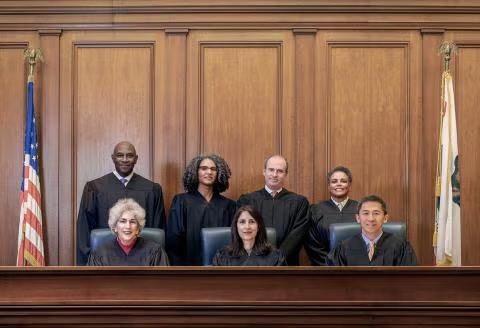Governor Newsom Signs AB 5 and Codifies Dynamex’s “ABC Test” for Independent Contractors
On September 18, 2019, Governor Newsom signed AB 5 into law and, in the process, fundamentally changed the California economy by making it even harder for a business to qualify a worker as an independent contractor.
The Dynamex Decision
As readers of this blog know, in May 2018 the California Supreme Court, in its landmark Dynamex decision, announced a new “ABC Test” for determining when a worker could qualify as an independent contractor. This was a much stricter test (making it harder for the worker to qualify) than the State’s previous “economic realities” test which was established in 1989 by the California Supreme Court in a decision known as S.G. Borello & Sons, Inc.
Under Dynamex’s new ABC Test, for a business to properly classify a worker as an “independent contractor,” the business must prove all of the following:
A. That the worker is free from the control and direction of the business in connection with the performance of the work;
B. That the worker performs work that is outside the usual course of the hiring entity’s business; and
C. That the worker is customarily engaged in an independently established trade, occupation or business of the same nature as the work performed.
It is the “B” prong above that has been most troublesome for many California businesses. Now, after the ABC Test, only workers who are truly in completely separate industries or occupations can qualify as an “independent contractor” (e.g., an electrician who comes into a law firm to do electrical work would qualify because the electrician performs work “outside the usual course” of the law firm’s business; however, a paralegal would not qualify as an independent contractor because he is engaged in the exact same work as the law firm business).
Although Dynamex was a watershed moment in California employment law, its impact was somewhat softened by subsequent Court decisions that held the new “ABC Test” applied only in wage-and-hour claims under the California Wage Orders. In all other contexts — like, for example, determining whether a worker was an “independent contractor” or employee for purpose of workers’ compensation coverage, or determining whether a worker was an “employee” and thus protected under the California Labor Code — the old “economic realities” test from S.G. Borello & Sons, Inc. still applied.
AB 5
AB 5 now changes all that and makes the ABC Test apply to claims under the California Labor Code (as well as under the Wage Orders), as well as for purposes of workers’ compensation and unemployment insurance. As a result, more workers who were treated as “independent contractors” will now likely be considered “employees” because fewer California workers will be able to meet the strict ABC Test. Many workers who now are treated as “independent contractors” — and who think they are independent contractors — will, instead, be considered “employees.” Thus, these workers will now, as a result of AB 5, have all the rights and privileges of employment — including the right to sue for violations of the California Labor Code, the right to collect unemployment, and the right to be covered by workers’ compensation insurance.
Exemptions
As a result of compromises that were made among legislators to get such a massive new bill passed, AB-5 exempts 7 categories of workers from the new ABC Test. These exemptions do not mean that workers in these categories automatically qualify as independent contractors; rather, it means only that the ABC Test is not the governing test for making that determination. Instead, the business must revert back to the “economic realities” test or to other tests as specified in the bill.
— Certain specific occupations. This exemption includes certain insurance agents, physicians, surgeons, podiatrists, veterinarians, dentists, architects, engineers, lawyers, private investigators, CPA’s, broker-dealers, investment advisers, commercial fisherman, and those involved in direct sales.
— Certain contracts for “professional services.” This exemption includes certain contractual services related to HR, marketing, travel agents, graphic design, photographers, journalists, freelance writers, editors, newspaper cartoonists, fine artists, grant writers, IRS agents, payment processing agents, estheticians, electrologists, manicurists, barbers and cosmetologists, provided that the business can demonstrate that 6 criteria are satisfied.
— Certain real estate licensed professionals. The exemption applies to certain real estate licensees and repossession agencies licensed pursuant to the California Business and Professions Code, as specified.
— Certain business-to-business contracting relationships. If a business service provider contracts to provide services to another business, the exemption will apply if the contracting business can demonstrate that 12 conditions are satisfied
— Certain relationships between contractors and subcontractors in the construction industry. The exemption will apply if the contractor demonstrates that 7 conditions are satisfied.
— Certain relationships between referral agencies and service providers. The exemption will apply if the referral agency can demonstrate that 10 conditions are satisfied.
— Certain relationships related to motor club services. If the motor club can demonstrate that the third party is a separate and independent business from the motor club, the exemption will apply to the relationship between the motor club and the third party who is performing services under a contract to the motor club.
What California Employers Should Do Now
There will inevitably be numerous legal challenges to AB 5. But, in the meantime, California businesses that use independent contractors should review every current worker who has been classified as an “independent contractor” to see if that worker is now an “employee” as a result of AB 5. Workers who have been made “employees” as a results of AB 5 will need to be blended into the workforce. As part of that process, employers will need to ensure that they are complying with all of California’s employment laws — including minimum wage, overtime, reporting time pay, meal and rest periods, and anti-discrimination and retaliation laws — for these new employees.
You can read the full text of AB 5 here.
Insights
OUR BLOG


